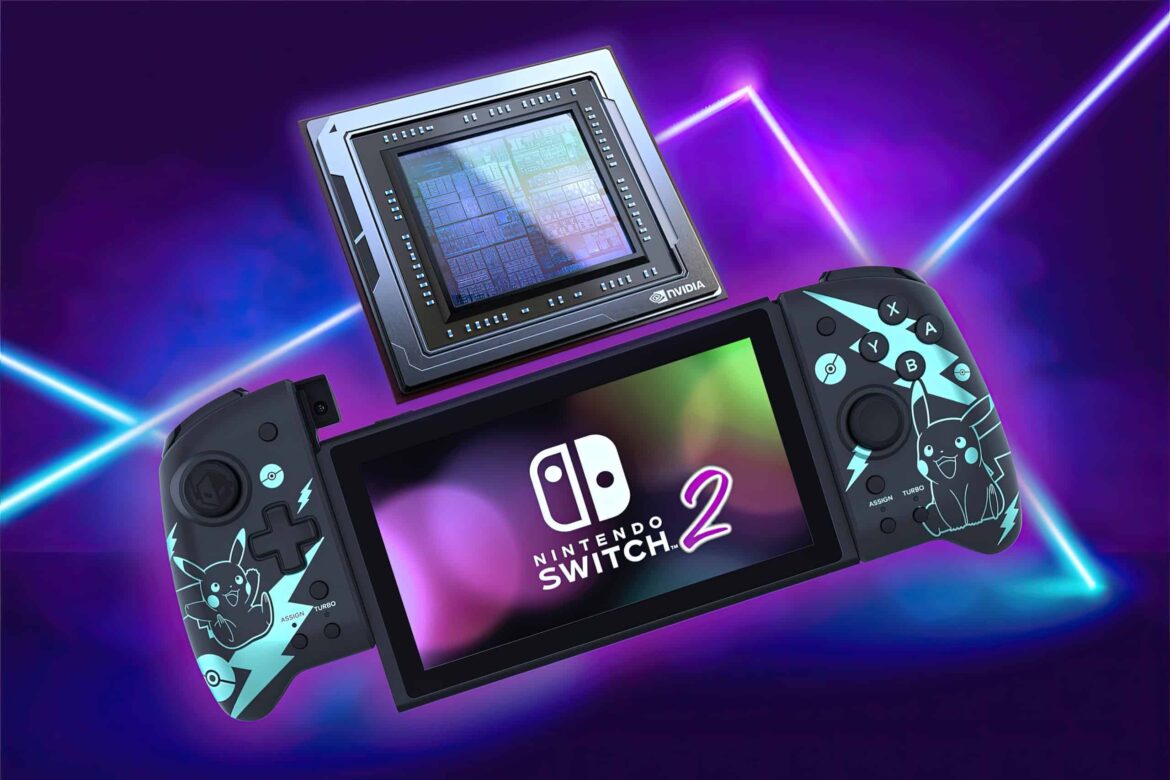719
The Nintendo Switch 2 with OLED display is considered the planned successor to the hybrid console. Leaks link Samsung panels, Nvidia chips, and a 4K-ready dock.
Nintendo Switch 2 in the OLED version – facts and current findings
The Nintendo Switch 2 with OLED display currently exists only as a well-documented plan; the LCD device has been on store shelves since June. The following information about the OLED version is based on leaks and industry reports and has not been officially confirmed by Nintendo.
- Display & Panel: The LCD model offers a 7.9-inch IPS panel with 1,920 × 1,080 pixels, HDR10, and VRR up to 120 Hz. The measured peak brightness is around 420 to 450 nits. According to industry reports, the OLED revision will feature an 8.4-inch OLED with the same resolution and frame rate; self-illuminating pixels enable deeper black levels, up to 1,000 nits peak brightness, and lower power consumption. Series production is scheduled to begin in fiscal year 2027 at the earliest.
- Processor: The LCD model relies on a custom Nvidia T239 SoC with Tensor and RT cores. This uses DLSS upscaling for 4K output on the dock and enables 1080p display at up to 120 fps on the go. The OLED revision uses the same chip, but developer kits show variable clock speeds that are intended to convert the power advantage of the OLED panel into longer battery life.
- Dock & Connections: The LCD model comes with a quietly cooled dock that feeds HDMI 2.1 with 4K/60 fps and Ethernet – no fan noise can be heard. The OLED revision appears in internal product documentation with a USB 4 retrofit including a 100 W fast charging profile, allowing you to use power adapters uniformly later on.
- Controller – Joy-Con 2: The LCD model offers magnetic attachment, mouse mode, and an additional GameChat button. The risk of drift remains minimal thanks to improved mechanics. The OLED revision features the same internals, but render images show two-tone front shells to match special editions.
- Storage & Media: The LCD model offers 256 GB UFS 3.1 and can be expanded via microSD Express; older microSD cards cannot be used for games. The OLED revision retains the platinum design, but internal roadmaps envisage 512 GB special models for collector’s editions.
- Runtime: In practical tests, the LCD model achieves a runtime of around 2.5 to 4 hours, depending on the load – intensive titles such as “Cyberpunk 2077” drain the battery faster. According to manufacturing partners, the elimination of backlighting in the OLED revision should enable gaming sessions lasting more than four hours.
- Price & availability: The LCD model has been available since June 5, 2025, and costs $449.99 or $499.99 in the “Mario Kart World” bundle. Industry sources estimate that the OLED revision will cost around $50 extra; with the market launch expected to follow the proven Switch rhythm of two years apart.
- Software compatibility: Physical Switch cartridges and eShop purchases launch directly on both models; cloud transfer takes care of game saves without any intervention. The OLED Plus version will be based on identical firmware, with additional image options such as perfect black automatically activated after a patch.
Advantages of the planned OLED version
The following list shows the extras that the OLED model is expected to offer according to current reports and why they could make a difference in everyday use.
- Highly efficient 8.4-inch panel: Samsung is supplying an OLED display with individually lit pixels. This results in a contrast ratio of around 1,000,000:1, and the HDR peak brightness reaches up to 1,000 nits according to the series plan. Support for VRR up to 120 Hz is retained, so that movements appear visibly smoother – without any separate menu adjustments.
- Eye comfort thanks to low blue light spectrum: LG and Eyesafe measurements show that modern OLEDs emit up to 30% less high-energy blue light without cooling colors. This technology reduces eye strain, especially during long evening sessions, and supports the natural sleep cycle.
- 5 220 mAh battery plus 36 W fast charging: The battery unit listed in Taiwan pairs with a 36 W PD profile. According to the NCC database, an empty handheld device can reach a charge level of around 50% in just over 50 minutes, while a full cycle takes three hours.
- Automatic burn-in prevention: Nintendo already integrates a “screen burn-in reduction” timer that reduces brightness and slightly shifts the image after five minutes of inactivity. The same logic applies to the OLED successor, supplemented by finer pixel shifts every minute. A hidden maintenance cycle also refreshes the entire screen in standby mode.
- Extremely short response time: According to Tom’s Hardware measurements, OLED gaming panels achieve switching times of around 0.03 ms. This feature makes fast-scrolling text and online racing games easier to read because ghosting is virtually eliminated.
- Sustainable packaging concept: Leaks show narrower boxes made from recyclable cellulose. The design reduces freight volume, cuts transport routes by up to five pallets per container, and reflects Nintendo’s CSR report on material savings.

